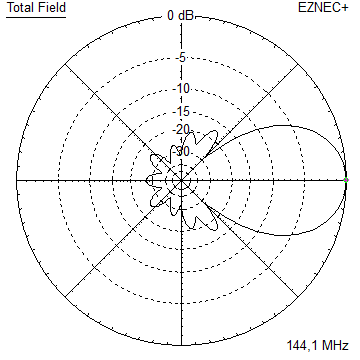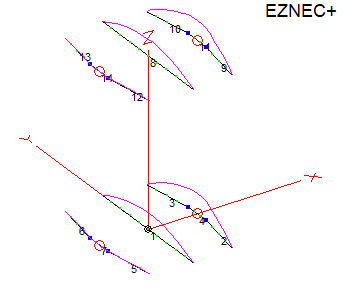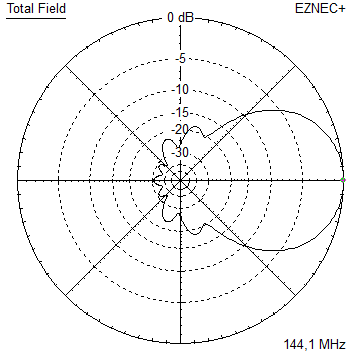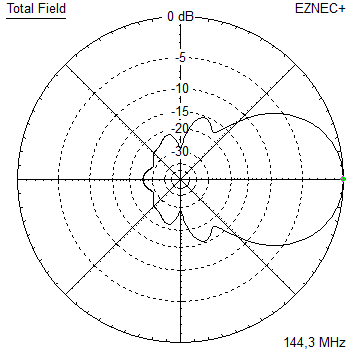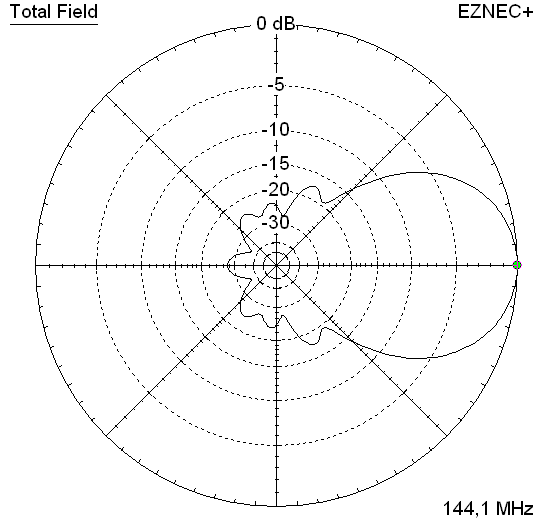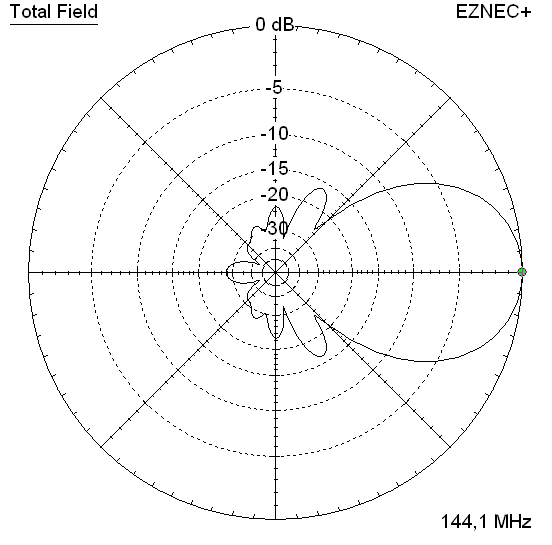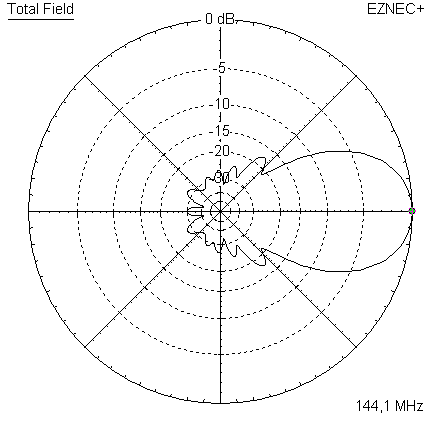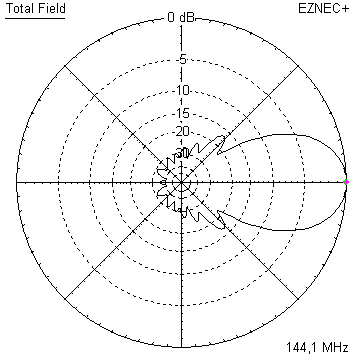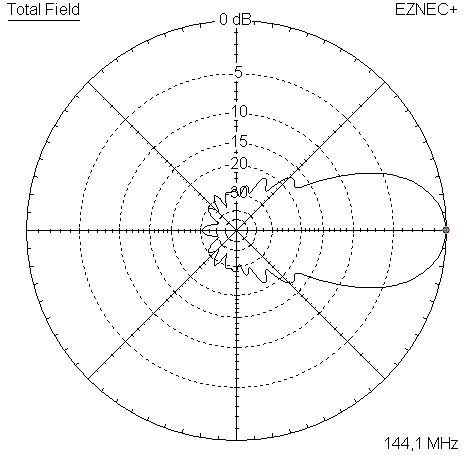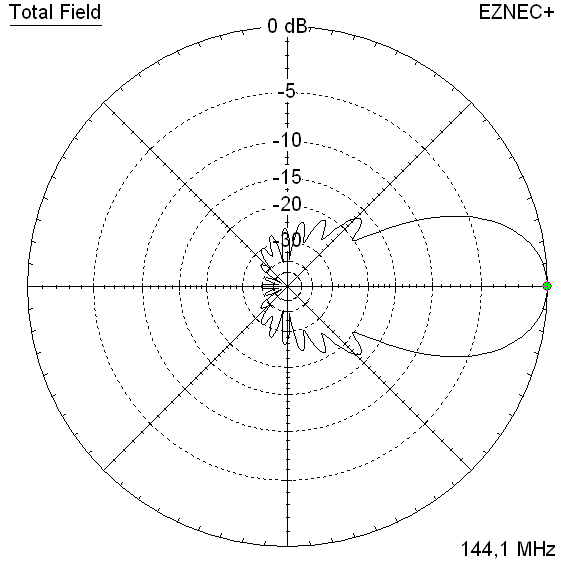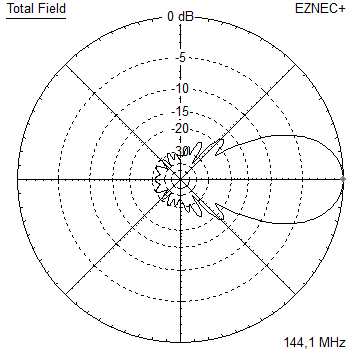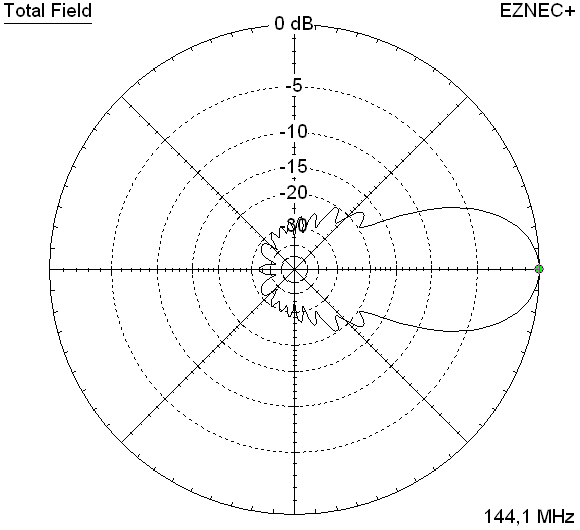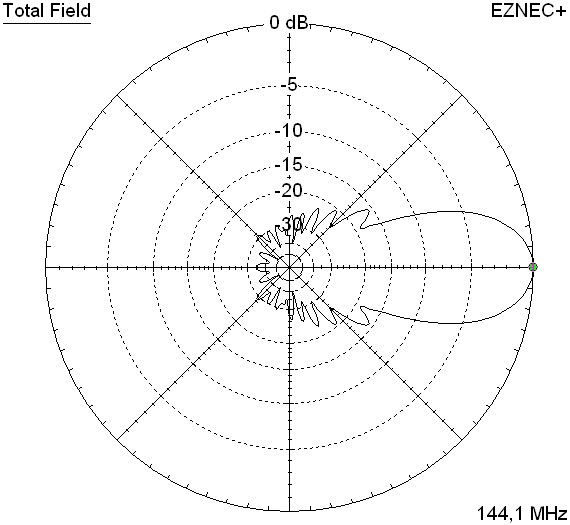
GTV 2-18w Yagi with bent Driven Element
EME + SSB Yagi with much reserves in bandwidth.
I think a long Yagi like this needs a good standing wide band character to enable reproduction
when testing abilities due to handling a near 12 m boom beast are limited.
This long Yagi is balanced between gain and Antenna Temperature.
The bent DE (K6STI style) transforms from low impedance to 50 ohms at feed point for direct feed.
Date of first issue of design = 2019.11.15
Current Profile
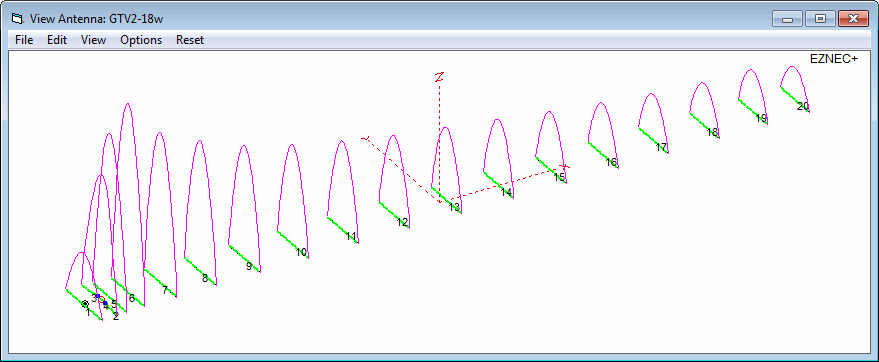
Performance Data
Gain vs. isotr. Rad. 17.55 dBi Gain vs. Dipole 15.4 dBD -3 dB E-plane 25.6 deg. -3 dB H-plane 26.8 deg. F/B -35.3 dB F/R -30.2 dB Impedance 50 ohms VSWR Band Width 1.08:1 * Mechan. Length 11740 mm incl. 2 x 40 mm offset at boom ends Electr. Length 5.60 λ Stacking Dist. h-pol. top-to-bottom 4.49 m or 14.7 ft side-by-side 4.69 m or 15.4 ft *) as in VE7BQH G/T table = at 145.00 MHz
Geometry
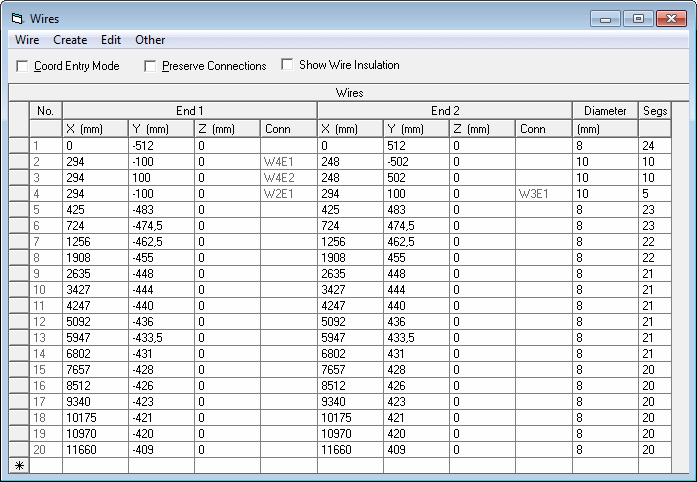

Table 1: GTV 2_18w, 8 mm elements on a 25 x 25 mm boom:
"Ready to saw and drill" data for mounting elements on boom with standard insulators. BC according DG7YBN:
|
Boom shape: square Boom dim: 25 x 25 mm |
|
Note: This includes a "Segmentation Density Correction" (SBC) of 1.17 mm
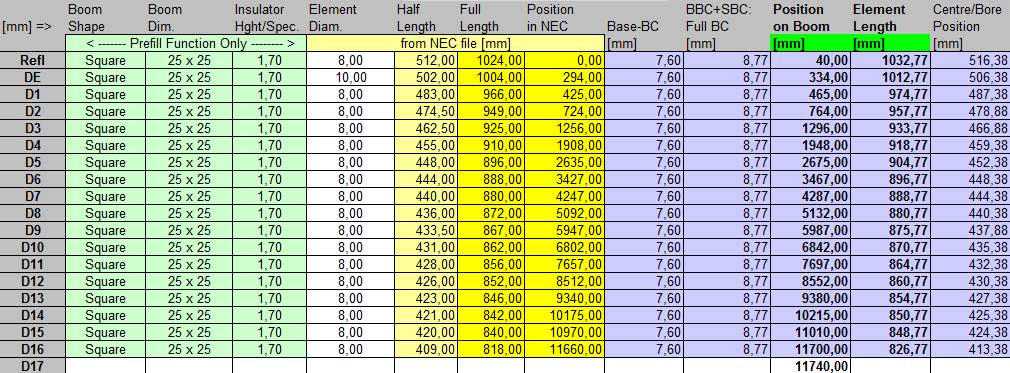
Table 2: GTV 2_18w, 8 mm elements on a tapered boom 20 x 20 and 25 x 25 mm boom:
"Ready to saw and drill" data for mounting elements on boom with standard insulators. BC according DG7YBN:
|
Boom shape: square Boom part 1: 20 x 20 mm Boom part 2: 25 x 25 mm Boom part 3: 20 x 20 mm |
|
Note: This includes a "Segmentation Density Correction" (SBC) of 1.17 mm
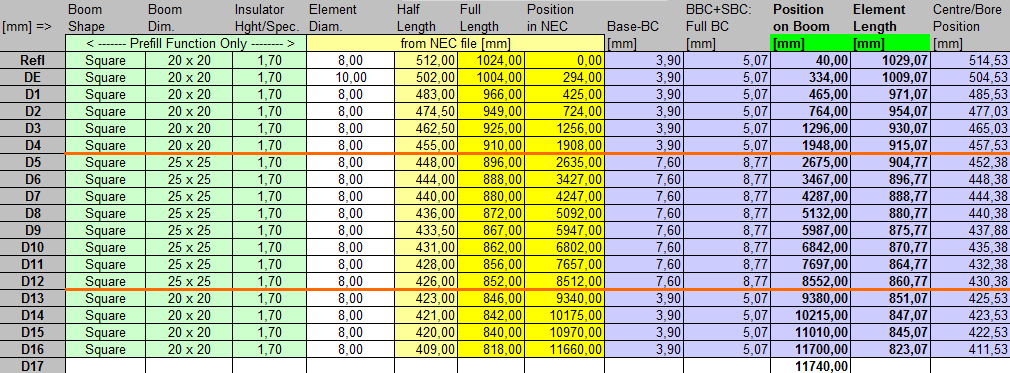
Sketch of Bent Dipole
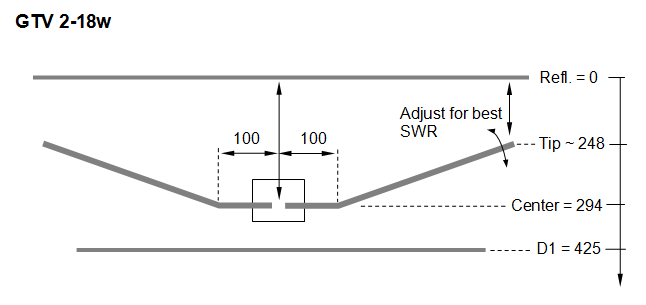
This design has been viewed how often after the first built has been published in Nov. 2019?
Serving Suggestion
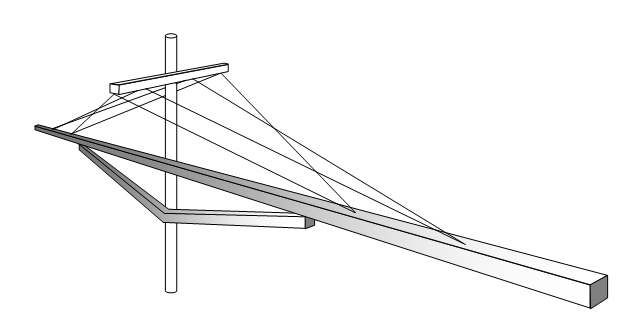
It is understood that it is vital for such a long beam of rather limited thickness
that we support it with a 3 dimensional stucture. Which might be produced by
the combination of a strut and two v-shape guy wires to front and back. With sufficent
stiffness to prevent the whole thing from shaking in wind gales which animate it to
vibrate in 1st or 3rd natural mode.
Pattern and VSWR Plots
Current distribution Elevation and Azimuth plot at 144.1 MHz
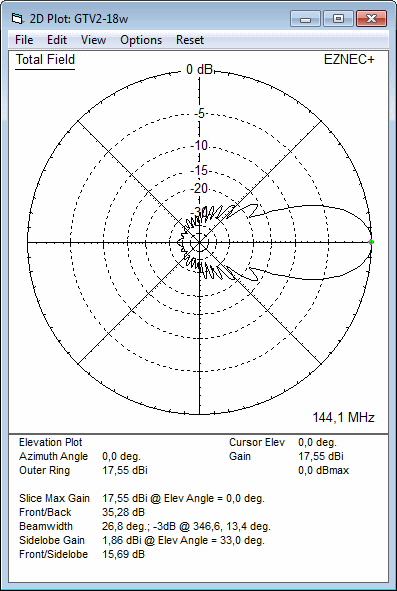
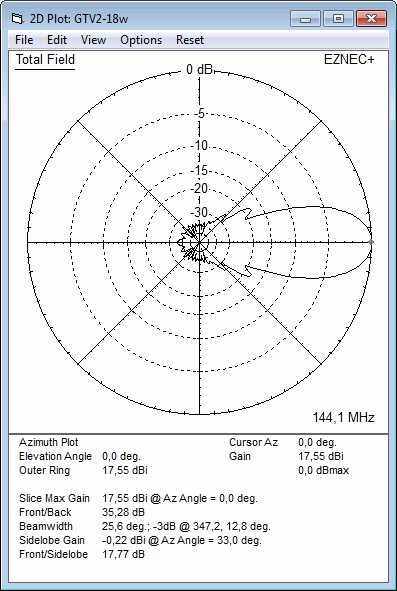
RL and SWR plot - simulated: 144.0 - 146.0 MHz
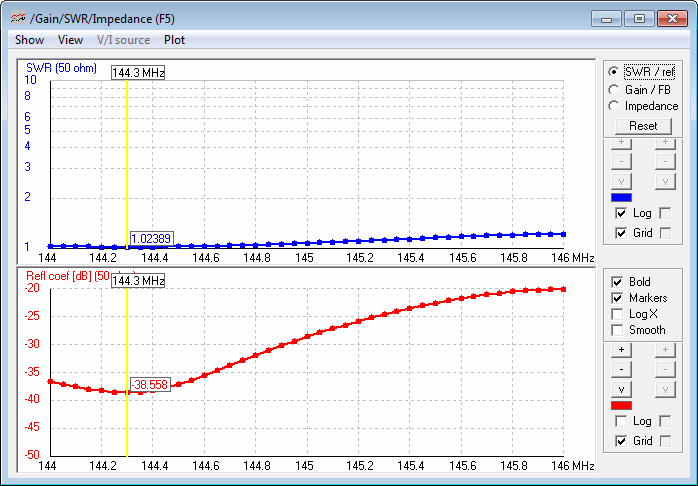
RL and SWR plot - simulated: 142.0 - 148.0 MHz
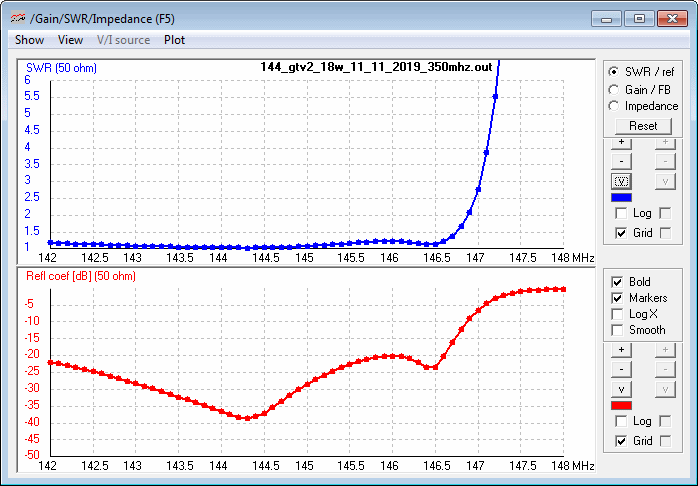
Downloads
One so far ...
X-pol Details
• Plane Offset is 584 mm.
Click on image to enlarge
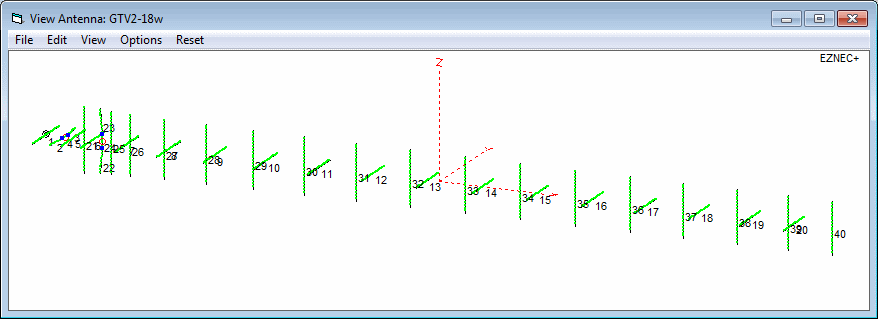
• Stacking Distance is 4.59 m as average of h-pol. and v-pol. distances acc. DL6WU
Stacking
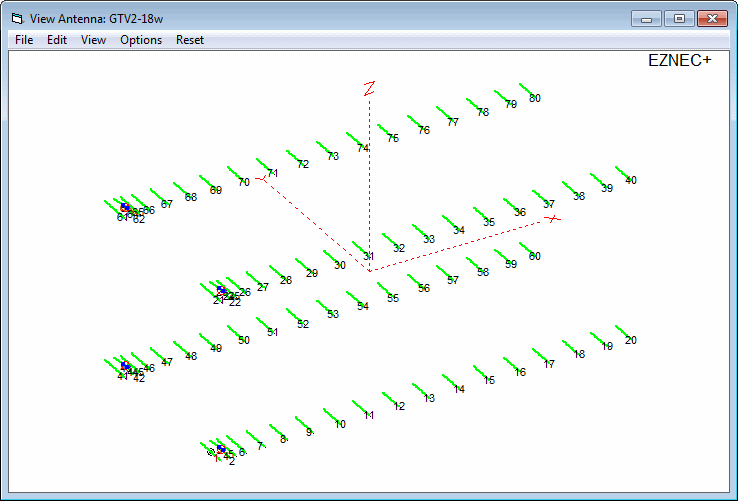
• DL6WU distances: 3D pattern simulation with 4nec2's 3D viewer
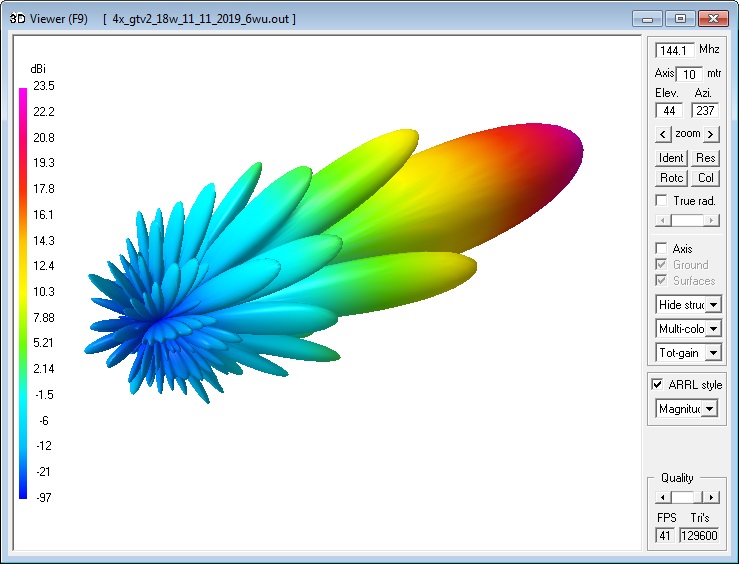
Stacking acc. DL6WU
Stacking Dist. DL6WU Formula E-plane 4.49 m or 14.7 ft H-plane 4.69 m or 15.4 ft X-pol Stacking Dist. 4.59 m each plane
Elevation and azimuth plot and data of 4 Yagi bay using DL6WU stacking distances

AGTC anyGTa 2lite screenshot at Tearth = 290 K, Tsky = 5400 K (residential area)
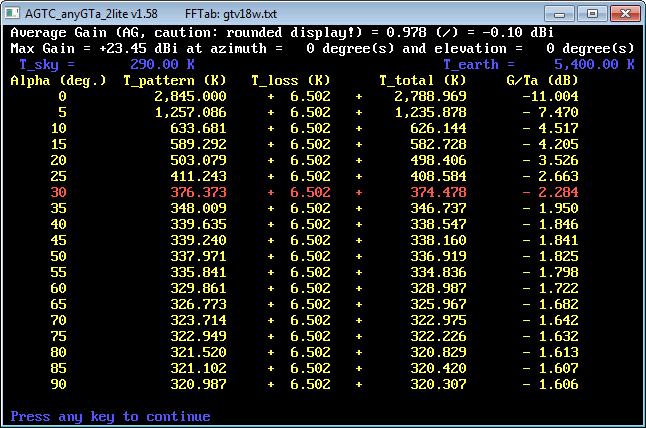
Gain vs. isotr. Rad. 23.45 dBi Gain vs. Dipole 21.3 dBD -3 dB H-plane approx. 6 deg. -3 dB E-plane approx. 5.8 deg. F/B -35.9 dB F/R -31.9 dB T_los 6.5 K T_ant 374.5 K* G/T -2.28 dB*Theoretical numbers, no phasing line losses
nor imperfections caused by H-frame included
*) T_sky = 290 K, T_earth = 5400 K as in VE7BQH G/T table for residential area
Same but understacked at DL6WU -12 percent
Stacking Dist. DL6WU Formula E-plane 4.49 m x 0.88 = 3.95 m H-plane 4.69 m x 0.88 = 4.13 m X-pol Stacking Dist. 4.04 m each plane
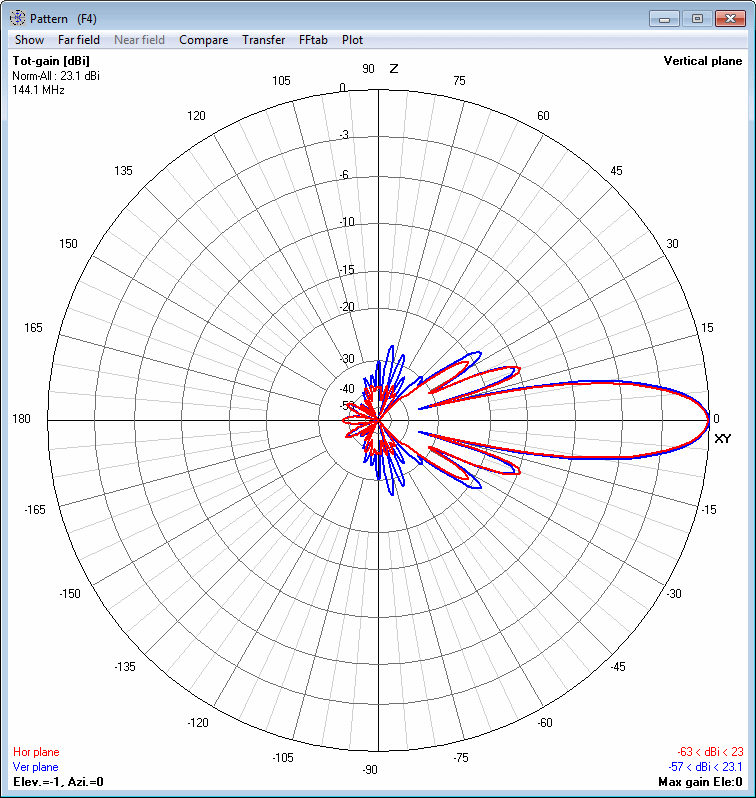
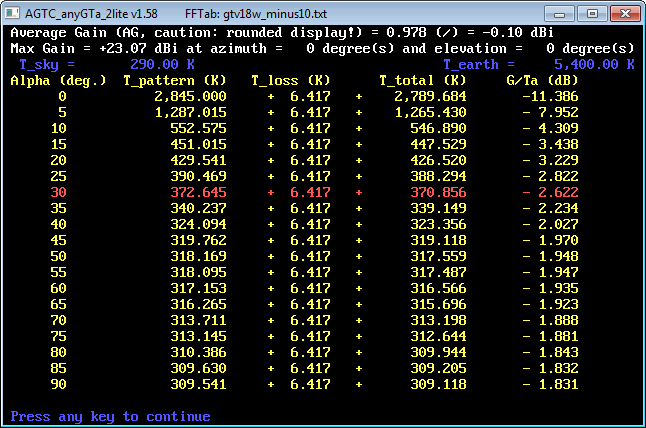
Same but overstacked at DL6WU +8 percent
Stacking Dist. DL6WU Formula E-plane 4.49 m x 1.08 = 4.85 m H-plane 4.69 m x 1.08 = 5.06 m X-pol Stacking Dist. 4.04 m each plane
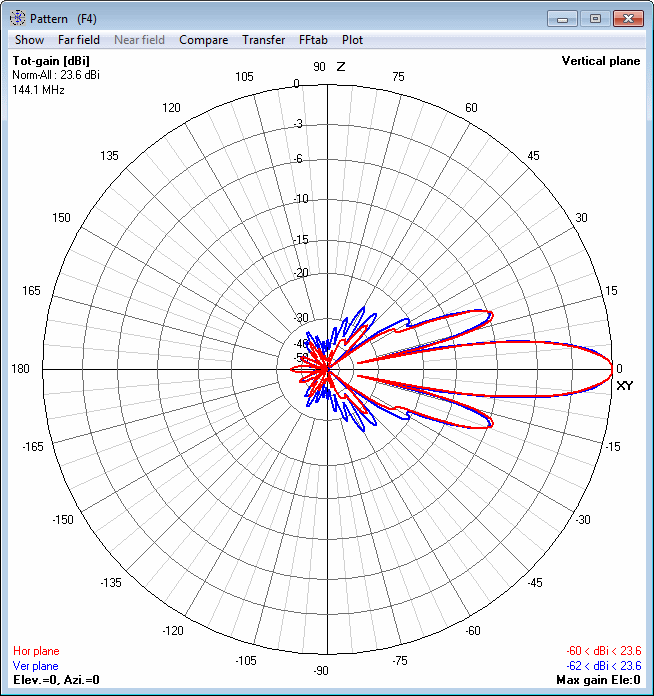
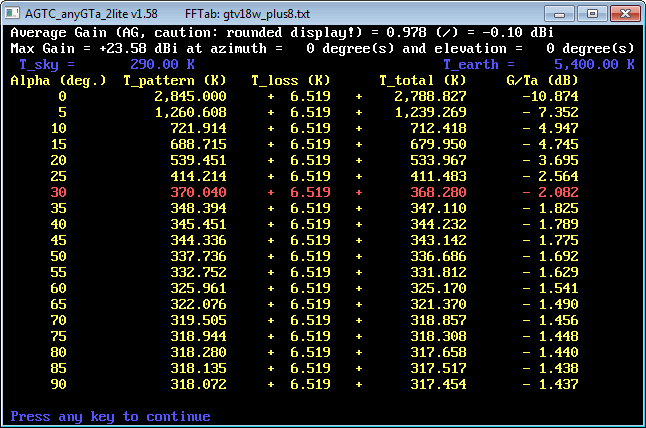
in a fictive Antenna G/Ta table:

73, Hartmut, DG7YBN
